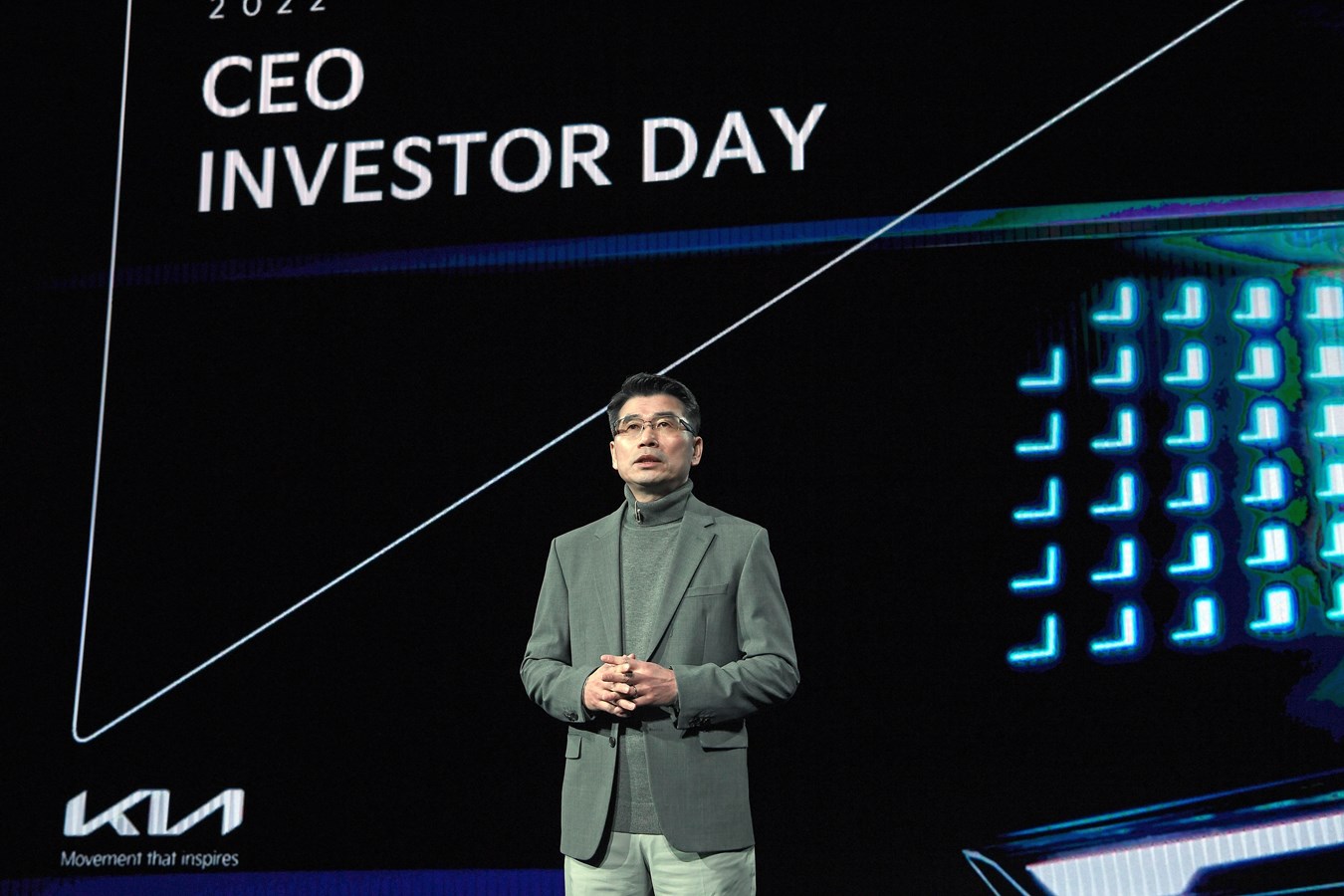Kia aims to reach $122B gross revenue by 2030
A year after Kia unveiled its roadmap to sustainable mobility by 2030, the Hyundai-owned brand has upped the ante. At the company’s 2023 CEO Investor Day Wednesday, Kia’s leadership said the company aims to reach KRW 160 trillion ($122 billion) in gross revenue by 2030.

The financial goal is part of a general update of Kia’s future-focused strategy, “Plan S,” which launched in 2020 and featured new branding. Wednesday’s update also includes a KRW 32 trillion ($24 million) investment into the automaker’s electrification strategy, with 45% of that money dedicated to “future business areas.”
The funds should help Kia nudge up its output up over the next few years. Kia updated its global sales goal of 4 million units by 2030 to 4.3 million units, and its annual EV sales goal of 1.2 million units to 1.6 million units by 2030. That’ll be quite the ramp from where Kia is today. The company is targeting 258,000 EV sales by 2023 and 1 million units by 2026, which will be 8% and 25% of all Kia sales, respectively. By next year, the company said it will begin operating its first dedicated EV factory at Gwangmyeong.
Kia also said it will release 15 new EV models by 2027, which is one more model than the company had promised last year. One of those models is expected to be a purpose-built mid-sized SUV, which Kia is aiming to launch by 2025. For what purpose it’s being built, Kia didn’t say.
The Korean automaker recently revealed the newest EV in its portfolio, the EV9 SUV, which is packed with tech and will go on sale in selected markets in the second half of the year.
All of Kia’s upcoming vehicles will be tech-focused, the company said. By 2025, Kia said all new models will be connected to the company’s “connected car data cloud,” which should enable over-the-air updates and allow customers to personalize their vehicles.
The company is also promising to focus on its brand of advanced driver assistance system (ADAS), AutoMode, which is debuting on the EV9. Kia is pushing its ADAS one step further with HDP (Highway Driving Pilot), which it describes as a Level 3 autonomous driving technology “that does not require human steering wheel control for certain road sections, such as highways,” and will also debut with the EV9 this year.
As part of its autonomy roadmap, Kia said by next year, the company plans to use OTA updates to bring drivers more “eye-off” or hands-free functions, and in 2026, it’ll release HDP2 that uses “high precision navigation.”
Purpose-built vehicle business
Alongside its first purpose-built SUV Kia aims to launch by 2025, the company has officially established a purpose-built vehicle (PBV) business structure, with a dedicated lineup of vehicles for various commercial needs. The company aims to develop a solution that can manage data, software and charging for the PBVs.
Kia said it believes the PBV unit will be one of its key future businesses. As such, the company is building a dedicated factory in Hwaseong, which will be unveiled in 2025 and will build medium-sized vehicles for a variety of vehicles. The PBVs will be based on a “flat skateboard-type platform, allowing the size and shape to be adjusted according” to a business partner’s purpose and needs.
Kia will gradually expand its PBV lineup to include a robotaxi, a small vehicle for delivering goods or food, and a large vehicle that can “replace public transportation or be used as a mobile office,” the company said.

